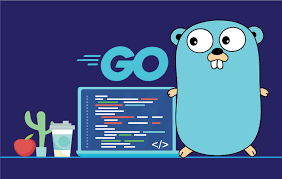info@gladsme.in
+91.8891968718
Unlocking the Power of Go: A Comprehensive Guide to Golang Development
Unlocking the Power of Go: A Comprehensive Guide to Golang Development

In the dynamic landscape of software development, new languages constantly emerge, each vying for attention and adoption. Among these, Go, also known as Golang, has steadily risen in popularity and acclaim. Developed by Google engineers and released to the public in 2009, Go has quickly gained traction due to its simplicity, efficiency, and robustness. In this article, we'll delve into the features that make Go a compelling choice for modern development projects.
Simplicity and Readability:
One of the defining characteristics of Go is its simplicity. The language is designed to be easy to learn and understand, with a clean and minimalistic syntax. This simplicity not only accelerates the development process but also promotes code readability and maintainability. Developers familiar with C-like languages will find Go's syntax intuitive and straightforward, reducing the learning curve for new projects and team members.
Concurrency Made Easy:
Concurrency lies at the heart of modern software development, especially in the era of multicore processors and distributed systems. Go embraces concurrency with its innovative approach, featuring lightweight threads called goroutines and channels for communication between them. Goroutines enable developers to write concurrent code with ease, facilitating the creation of highly scalable and efficient applications. With Go, handling thousands of concurrent connections or processing large datasets becomes a manageable task, thanks to its built-in concurrency primitives.
Performance and Efficiency:
In addition to its concurrency support, Go boasts impressive performance and efficiency. The language is compiled to native machine code, bypassing the need for virtual machines or interpreters. This compilation model results in fast execution times and minimal overhead, making Go well-suited for performance-critical applications. Furthermore, Go's garbage collector is designed for low-latency operation, minimizing pauses and ensuring smooth application performance even under heavy loads.
Rich Standard Library:
Go ships with a comprehensive standard library that covers a wide range of common tasks and functionalities. From networking and cryptography to file I/O and HTTP servers, the standard library provides developers with the tools they need to build robust and secure applications out of the box. This extensive library reduces reliance on third-party dependencies and simplifies the development process by offering battle-tested solutions to common problems.
Cross-Platform Compatibility:
With Go, developers can write code that runs seamlessly across different platforms, including Windows, macOS, and various Unix-like operating systems. Go's compiler generates platform-native executables, ensuring consistent behavior and performance regardless of the underlying environment. This cross-platform compatibility enables developers to target a diverse range of deployment scenarios without the need for platform-specific modifications or adaptations.
As software development continues to evolve, Go has emerged as a versatile and pragmatic choice for building modern applications. Its simplicity, concurrency support, performance, and rich standard library make it well-suited for a wide range of use cases, from web servers and microservices to command-line tools and system utilities. Whether you're a seasoned developer or just starting your journey in software engineering, Go offers a compelling combination of features and benefits that make it worth exploring. Embrace the power of Go and unlock new possibilities in your development endeavors.
Related Blogs

The Importance of Data Structures in Software Development
Read More...
Exploring Machine Learning Algorithms: A Beginner's Guide
Read More...
The Evolution of Programming Languages: From Assembly to Rust
Read More...
Understanding Big O Notation: A Guide for Developers
Read More...Subscribe for our Newsletter
Subscribe to elevate your software game! Stay updated on the latest trends, coding insights, and exclusive promotions with our newsletter.
